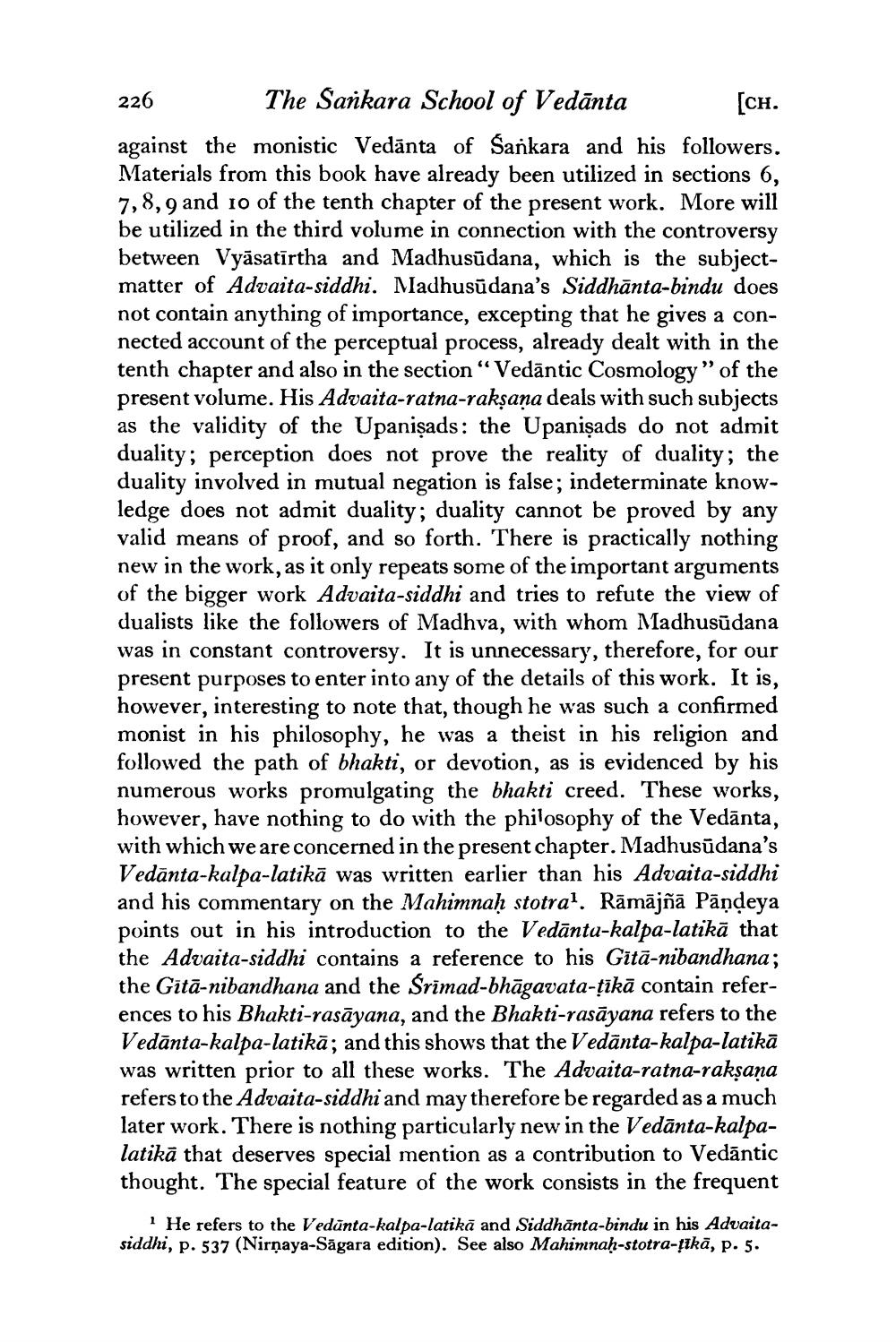________________
226
The Sankara School of Vedanta
[CH.
against the monistic Vedanta of Sankara and his followers. Materials from this book have already been utilized in sections 6, 7,8,9 and 10 of the tenth chapter of the present work. More will be utilized in the third volume in connection with the controversy between Vyasatīrtha and Madhusudana, which is the subjectmatter of Advaita-siddhi. Madhusudana's Siddhanta-bindu does not contain anything of importance, excepting that he gives a connected account of the perceptual process, already dealt with in the tenth chapter and also in the section "Vedantic Cosmology" of the present volume. His Advaita-ratna-rakṣaṇa deals with such subjects as the validity of the Upanisads: the Upanisads do not admit duality; perception does not prove the reality of duality; the duality involved in mutual negation is false; indeterminate knowledge does not admit duality; duality cannot be proved by any valid means of proof, and so forth. There is practically nothing new in the work, as it only repeats some of the important arguments of the bigger work Advaita-siddhi and tries to refute the view of dualists like the followers of Madhva, with whom Madhusudana was in constant controversy. It is unnecessary, therefore, for our present purposes to enter into any of the details of this work. It is, however, interesting to note that, though he was such a confirmed monist in his philosophy, he was a theist in his religion and followed the path of bhakti, or devotion, as is evidenced by his numerous works promulgating the bhakti creed. These works, however, have nothing to do with the philosophy of the Vedanta, with which we are concerned in the present chapter. Madhusudana's Vedanta-kalpa-latika was written earlier than his Advaita-siddhi and his commentary on the Mahimnaḥ stotra1. Rāmājñā Pāṇḍeya points out in his introduction to the Vedanta-kalpa-latikā that the Advaita-siddhi contains a reference to his Gita-nibandhana; the Gita-nibandhana and the Śrimad-bhāgavata-ṭīkā contain references to his Bhakti-rasāyana, and the Bhakti-rasayana refers to the Vedānta-kalpa-latikā; and this shows that the Vedanta-kalpa-latikā was written prior to all these works. The Advaita-ratna-rakṣaṇa refers to the Advaita-siddhi and may therefore be regarded as a much later work. There is nothing particularly new in the Vedānta-kalpalatikā that deserves special mention as a contribution to Vedantic thought. The special feature of the work consists in the frequent
He refers to the Vedanta-kalpa-latikā and Siddhanta-bindu in his Advaitasiddhi, p. 537 (Nirnaya-Sagara edition). See also Mahimnaḥ-stotra-ṭīkā, p. 5.




